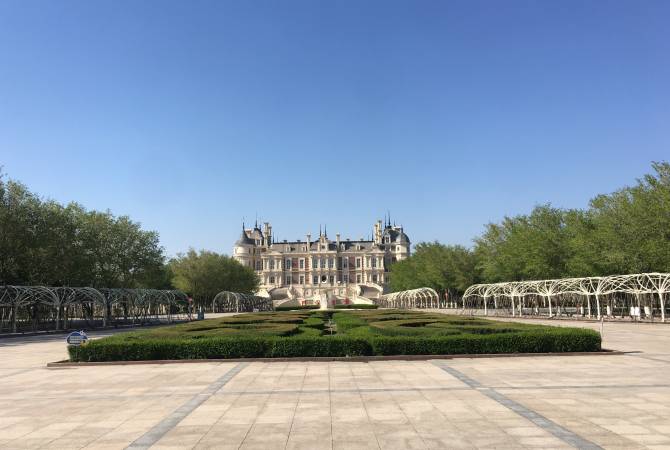China develops Xinjiang into BRI hub
 12:05, 3 May 2024
12:05, 3 May 2024BEIJING, MAY 3, ARMENPRESS. The Xinjiang Uygur Autonomous Region in northwestern China, the largest province-level division in the country, has been rapidly developing economically over the past years as it’s considered a bridge to Central Asia and Europe and a hub in Belt and Road cooperation.
The multi-ethnic region borders eight countries - Afghanistan, Kazakhstan, Kyrgyzstan, Mongolia, Pakistan, Russia, Tajikistan, and India.
In 2023, the region’s GDP comprised 1,91 trillion yuan, and the output of agriculture, forestry, animal husbandry and fishery reached 564,8 billion yuan. Xinjiang has traditionally been an agricultural region, but is also rich in minerals and oil.
Cotton industry, among others, is a major sector in the province.
The Xinjiang Production and Construction Corps is the driving force behind the rapid growth. The XPCC is a unique enterprise. The province is actually administered parallel by the XPCC and the Xinjiang Uygur Autonomous Regional government. The XPCC has a unique and complex history: It was created in 1954 to safeguard the frontier area mainly through agriculture and industry. In other words, soldiers “took off their uniforms” and switched to farming. It is organized in a military style, using divisions and regiments in its structure, but it is not actually a military organization and the names have been kept as an homage to its history, local officials explained. The XPCC headquarters are in Urumqi, Xinjiang’s capital city, and it has presence in multiple other cities, such as Alar and Shihezi.
A public service employee talking to citizens at a service center in Urumqi
It is a special provincial and ministerial-level district and an integral part of the province.
“The Xinjiang Production and Construction Corps is an important part of the Xinjiang Uygur Autonomous Region,” Jiang Qingshan, the XPCC Director of the Foreign Affairs Office told reporters. “Currently, the XPCC is comprised of 14 divisions, 12 towns, 179 farms, 3 universities and 14 trading companies.”
The XPCC’s share in the total regional GDP was 369 billion yuan in 2023.
“The XPCC is constantly increasing the degree of opening-up to the world and is actively participating in building the main zone of the Silk Road Economic Belt,” Jiang Qingshan said.
The XPCC has even developed its own highly efficient water-saving irrigation system for agriculture, which saves 1800 cubic meters of water per hectare.
Agricultural fields with water saving irrigation systems
In 2022, Chinese President Xi Jinping, during a visit to the Urumqi International Land Port Area, said that “as the Belt and Road cooperation advances, Xinjiang is no longer a remote corner but a core area and a hub.”
Healthcare is also rapidly developing in the region. Doctors use 5G-powered robotic surgery technology and remote diagnostics methods at the Sir Run Run Shaw affiliated Alar hospital to treat patients in remote areas during emergencies.
Alar hospital staff demonstrate AI-powered remote surgery equipment
The Shihezi University is a testament to the XPCC’s level of attention to education. The public university offers a variety of specialties, such as Agriculture, Medicine, Engineering, Economics and Trade, Literature and Arts, among others.
A lecturer in Shihezi University
The Shihezi University maintains an active network of cooperation with foreign partners, and many academics and students visit it for exchange programs and trainings.
Foreign students at Shihezi University
Viticulture is a highly important sector in the province.
Chateau Changyu Baron Balboa
China's biggest winemaker, Changyu, operates a must-see winery in Shihezi city, called the Chateau Changyu Baron Balboa, named after the company’s first winemaker, Mr. Balboa of Belgium.
The winery has the region’s largest wine cellar.
Wine Cellar
Another major tourism destination is the Taklamakan Desert, where visitors can have an adrenaline rush driving sandrails or riding camels.
Taklamakan is one of the largest sandy deserts in the world.
Taklamakan Desert
This article has been written within the framework of the China International Press Communication Center (CIPCC) 2024 media exchange program.





















